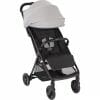Career & Money
Things You Should Know About Paid Family And Medical Leave
During her first pregnancy, Hana LaRock, a freelance writer from New York, encountered challenges with the process of paid parental leave offered by her husband’s company. Despite alleviating her initial worries, the experience turned out to be more complex than expected. Recalling her struggle, she described the system as excessively intricate and hard to maneuver. “Getting assistance over the phone was next to impossible, and the support provided was minimal… The situation varies depending on the state, job, and circumstances,” she mentioned.
Paid family leave entails receiving compensation, either partial or full, while taking extended time off work for qualifying purposes like bonding with a new child. However, this benefit is quite uncommon. Presently, the United States lacks any federal legislation regarding paid family leave for private sector employees—in other words, those working outside government entities. Nonetheless, experts advocate for the implementation of such laws. Here’s what prospective parents should be aware of regarding paid family and medical leave.
Rachel Berlin Benjamin
Rachel Berlin Benjamin serves as a lawyer and Partner at Beal Sutherland Berlin & Brown, based in Atlanta.
Nikki Innocent
Nikki, an Atlanta-based lawyer, serves as a holistic career and life coach catering to women navigating the complexities of contemporary career planning.
Perspective on Paid Family and Medical Leave in the U.S.
“The United States lags significantly behind other nations that offer family leave, a fact that has been consistently demonstrated,” stated Rachel Berlin Benjamin, a legal professional and partner at Beal Sutherland Berlin & Brown based in Atlanta.
“Several nations actively promote and establish paid family leave, encouraging families to utilize it effectively for nurturing family bonds. It’s evident that in the U.S., the emphasis is on work rather than parenting, resulting in the absence of federal regulations supporting paid leave,” observed Benjamin. She continued, stating, “[G]lobally, we stand as the sole nation without provisions for paid leave for new parents.”
LaRock echoed this sentiment, commenting, “After our daughter’s birth, we resettled overseas, and it shocks me that U.S. citizens are only granted a maximum of 12 weeks off. It saddens me that not only is the leave minimal for full-time employees, but freelancers like myself are excluded. I had to resume work within two weeks to avoid missing out on opportunities. I fulfill my tax obligations and work diligently; hence, there’s no reason why these benefits shouldn’t extend to me.”
“Even in 2024, many expecting parents face dismay and distress upon realizing their workplace lacks a family leave policy or presents significant barriers to qualifying for this benefit,” remarked Nikki Innocent, a career and life coach based in New York.
Comprehending Paid Family and Medical Leave
Paid family leave not only encompasses the arrival of a new child but also bonding with the child, recovering from illness, or tending to an ailing family member, as outlined by data from the U.S. Department of Labor.
Advantages of Paid Family and Medical Leave
This form of leave can enhance public health, alleviate individual stress among workers, and foster equality across various racial and socioeconomic groups. It further promotes financial stability within families, nurtures bonds with newborns or adopted children, and facilitates a smoother transition back to work. For businesses, it enhances productivity and staff retention. Nevertheless, a report by the Bureau of Labor Statistics shows that merely 27% of civilian and private industry workers in the U.S. have access to such benefits.
Namatie S. Mansaray, M.S.
Namatie S. Mansaray serves as the Senior Director for Workplace Justice at MomsRising and takes pride in her political science degree from Bowie State University and her Public Policy master’s from Drexel University.
“Women and working families should not face the dilemma of choosing between sustenance and tending to themselves or loved ones during times of necessity,” emphasized Namatie S. Mansaray, Senior Director for Workplace Justice at MomsRising. “Families deserve a comprehensive and equitable paid family and medical leave scheme that safeguards their employment while allowing them the necessary time to care for themselves and their loved ones.”
“Only 27% of civilian and private industry workers in the United States have access to paid family leave.”
Mansaray stressed the significance of paid family leave for Black and Latinx families, noting, “Black women and Women of Color, who shoulder a substantial caregiving burden, invest significant portions of their lives in unpaid caregiving duties.”
The Valuable Aspects of Paid Family Leave
Innocent highlighted, “There are essential, less tangible benefits that warrant recognition and amplification—namely, freedom, flexibility, community support, and inclusivity. Paid family leave grants families the freedom to allocate their time, effort, and resources in alignment with their unique requirements as they embark on this new chapter.”she expressed. She continued, “For some individuals, the primary advantage may lie in disengaging from work responsibilities; for others, it may revolve around the financial aspect, ensuring the ability to cater to a child’s needs. And for some, the acknowledgment of this critical life milestone’s complex and valuable reality holds utmost importance.”
Different Varieties of Family and Medical Leave
Various forms of family leave are available, contingent on your family’s requirements and eligibility.
Maternity Leave
The time a new mother takes off work following the birth of her baby. Although FMLA ensures up to 12 weeks of maternity leave, it is unpaid time (more details on FMLA below).
Paternity Leave
The time a new father takes off work after the birth of a child. Fathers can opt to take paternity leave alongside a mother’s maternity leave or extend their leave to ensure continuous care. New fathers are also eligible for FMLA.
Parental Leave
Compensated time off for a worker who needs to care for a biological child, foster child, or adopted child.
Adoption Leave
Compensated time off given to a worker who has recently adopted a child or is in the adoption process.
Caregiver Leave
Compensated time off granted to a caregiver looking after a spouse, child, or family member with a severe illness.
FMLA versus Short-Term Disability: Understanding the Difference
While the Family and Medical Leave Act (FMLA) of 1993 provides employees with 12 weeks of unpaid leave in the first year of a new child’s life, it only applies to employees at firms with 50 or more employees. Additionally, FMLA is devoid of payment, offering little financial relief during the arrival of a new baby.
“In the US, there’s no certainty regarding paid time off by federal regulations, and a good number of individuals lack access to unpaid leave,” Innocent explained. “The FMLA of 1993 guarantees a total of 12 weeks of unpaid leave in the first year following a child’s birth or placement, but it’s solely applicable to larger companies (50+ employees). Unfortunately, the US significantly lags behind many global peers in terms of family leave both in practice and in the broader discourse on the subject.”
In contrast, Short-Term Disability (STD) provides a portion of your income when you’re unable to work, but it doesn’t offer job security like FMLA. STD is an insurance benefit that typically requires enrollment before pregnancy. The payment percentage varies depending on individual plans.
“Check whether your state offers paid leave and refer to your company’s policy and manual on paid leave,” Benjamin advised. “If your employer doesn’t provide paid leave, consider the option of short-term disability for partial income support after childbirth. However, it’s worth noting that STD policies generally assist birthing mothers and not fathers seeking paid time off.”
Comprehending Your Entitlements and Alternatives
Currently, 13 states have enacted laws concerning paid family and medical leave: California, Colorado, Connecticut, Delaware, Maine, Massachusetts, Maryland, Minnesota, New Jersey, New York, Oregon, Rhode Island, Washington state, and Washington, D.C.
Although the prerequisites for paid leave vary based on the company and state, typically, an employee must have a minimum duration of employment, provide a request well in advance (sometimes up to 30 days before), and may need to deplete accrued vacation or paid time off before transitioning to paid family leave. Expectant parents should consult their organization’s guide for specific information on their PFL policy.
<p“Just like various components of your compensation package that you overlook when first hired, many individuals fail to focus on the specifics of their company’s policy until the need arises,” Innocent stressed. “Often, firms lack accessible or clear information for employees to comprehend their choices, the required steps, or the overall implications when opting for leave if available.”
Familiarize Yourself with State and Company Eligibility Criteria
Tara Bodine
With over two decades of experience in corporate HR teams, Tara Bodine serves as an HR Expert and Founder of True North People Consulting, based in Andover, Massachusetts.
“Understanding the eligibility prerequisites for each state-funded leave scheme is crucial,” explained HR specialist and consultant Tara Bodine, founder of Andover, Massachusetts-based True North People Consulting. “Factors such as company size, public or private sector, employment status (self-employed, freelancers, contractors, etc.), tenure of employment, and earnings (contributed to the payroll tax program) all influence this. This knowledge equips you to plan your leave effectively.”
The process for accessing PFL varies by state, but generally, details on application and verification of PFL status can be found online. For instance, expectant parents in California can submit their PFL application via the state’s Employment Development Department website.
Prepare for a Period of Reduced Income
It’s essential to remember that even if you are eligible for paid leave, it typically covers only a portion of your earnings, cautioned Bodine. “Expectant parents must bear in mind that paid family leave usually accounts for a fraction of their income,” she highlighted. “Therefore, thorough research and advanced planning are vital. Valuable resources can be accessed on the Department of Labor and State Government websites, aiding you in making informed decisions.”
Distinguish Between Paid Leave and Workplace Adjustments
It’s important to differentiate between PFL and workplace accommodations. The latter involves modifications to a job or work environment that enable a person with a disability to perform their work effectively.
Obstacles and Factors to Consider
Even if you or your partner qualify for paid family leave, it can present challenges. From determining eligibility for PFL to the application procedure to the emotional repercussions
When new parents decide to take a break, the adjustment period can pose a significant challenge.
Negative Perception in the Workplace
“Leaving for a break is often viewed negatively,” stated Innocent. “There’s this belief that by taking time off, you’re leaving your team in a lurch without your daily input. The organization also harbors concerns that trickle down to the employees, questioning whether the person on leave will return or, if they do, whether they’ll be able to perform as effectively as before.”
Embracing the inevitable changes that come with welcoming a new child, and seeing it as an opportunity to enhance your skills and mindset upon your return to work, is crucial.
Phasing Parental Leave
Experts suggest that splitting paid family leave between parents is a common option but comes with its own set of difficulties.
Sarah O’Leary
CEO of Willow Innovations, the company that introduced the first wearable, in-bra breast pump in 2017. O’Leary is also a mother of two.
“Many underestimate the all-consuming nature of the initial weeks for parents with a newborn,” said Sarah O’Leary, CEO of Willow. “Some parents choose to stagger their leave, allowing the mother to take her leave first, followed by the partner. While this approach has its benefits, it can also leave new mothers feeling overwhelmed and isolated during the challenging early days.”
Crafting a Reintegration Strategy
New mothers should also prepare a plan for their return to work. “While many mothers plan for maternity leave, they may overlook the need for a clear reentry plan,” noted O’Leary. “The stress of arranging childcare, managing breastfeeding and pumping at work, and navigating the complex emotions of returning to work post-leave can be equally daunting.”

















